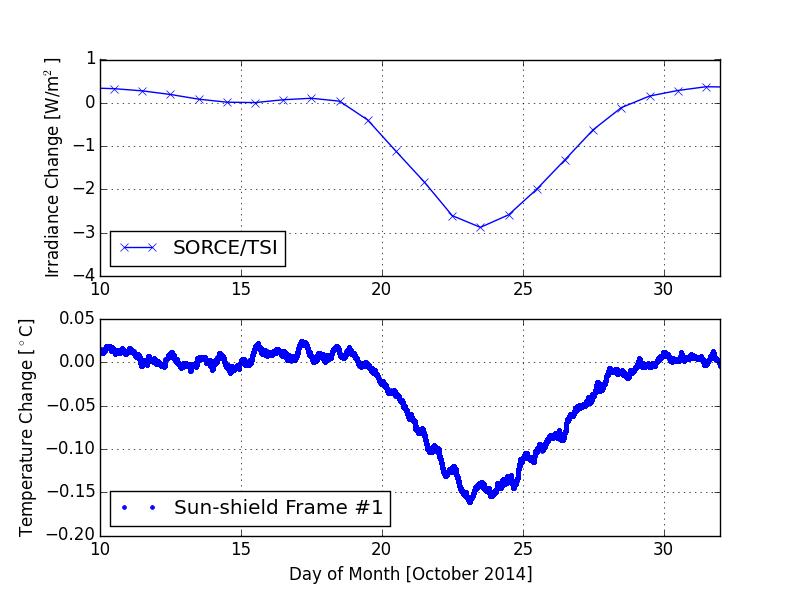IoW_20160324 - Gaia
Image of the Week |
|||||
Gaia spots a Sunspot |
|||||
 |
|||||
|
Figure 1: Full Sun disk images showing sunspot AR12192 as it passed across the face of the Sun in 2014. Credits: NASA/SDO and the AIA, EVE and HMI science teams |
|||||
|
One of the reasons that the operational orbit at the second Sun-Earth Lagrange point (L2) was selected for Gaia is because it provides the thermal stability that is needed to make the extremely precise measurements of star positions for which the spacecraft was built. Satellites in Earth orbit experience deep eclipses where either the Earth or the Moon passes in front of the Sun and the thermal disturbances caused by these eclipses would affect the Gaia measurements. The Gaia orbit at L2 has been designed to have no Earth transits across the face of the Sun although there are occasional transits of the Moon which cause small thermal changes onboard. |
|||||
 |
|||||
|
Figure 2: Total solar irradiance change (top) and sun-shield temperature change measured as sunspot AR12192 passed across the face of the Sun in 2014. Credits TSI data: University of Colorado Laboratory for Space and Atmospheric Physics |
|||||
|
The TSI data for this period were acquired by the Solar Radiation and Climate Explorer (SORCE) spacecraft. Starting on 18 October, these data show a slow decrease in the TSI over a few days with the lowest TSI value about 3 W m-2 (0.22%) less than the normal reached on 23 October (Figure 2). The reason for this slow decrease in observed output is that as the spot rotates across the spherical surface of the Sun its apparent area increases and therefore so does its influence on the measured solar output. As expected, similar analyses of the data from the payload, which is strongly thermally isolated from the sun-shield, show that there was no significant effect on the instrument from this sunspot. Acknowledgement: contribution by Edmund Serpell, a Gaia Operations Engineer working in the Mission Operations Centre at ESA's European Space Operations Centre in Darmstadt, Germany. |
|||||
|
[Published: 24/03/2016] |
|||||
- Removed a total of (14) style text-align:center;
- Removed a total of (2) style text-align:justify;
- Removed a total of (1) border attribute.
- Removed a total of (1) cellpadding attribute.
- Removed a total of (1) cellspacing attribute.
Image of the Week Archive
- Removed a total of (1) border attribute.
- Removed a total of (1) cellpadding attribute.
- Removed a total of (1) cellspacing attribute.








































 Sign in
Sign in
 Science & Technology
Science & Technology
